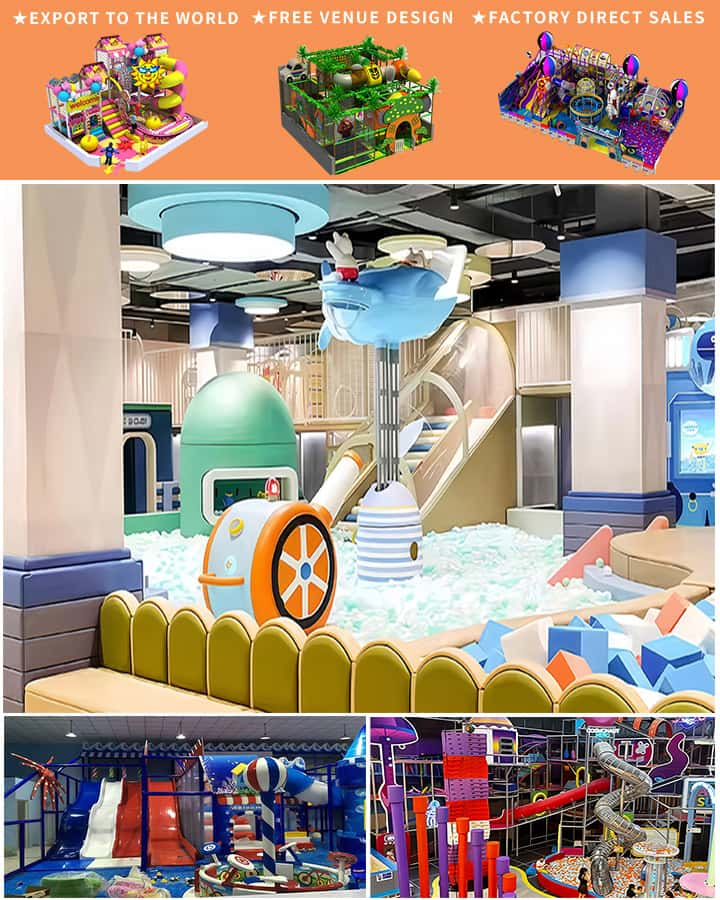In recent years, indoor playgrounds have emerged as a haven for kids to play, learn, and explore in a safe and controlled environment. These vibrant spaces are not only a refuge from inclement weather but also an opportunity to create an engaging and stimulating atmosphere that fosters creativity and development. A well-designed kids’ indoor playground goes beyond mere aesthetics; it integrates safety, functionality, and fun into its very fabric, making it an ideal place for children to enjoy their formative years. Here’s how thoughtful interior design can transform an indoor playground into a wonderland for kids.
Safety First
When it comes to designing an indoor playground, safety is paramount. The materials used should be non-toxic and free of harmful chemicals, ensuring that the little ones are protected from potential health hazards. Flooring is another critical aspect; rubber mats or soft foam tiles provide cushioning to minimize injuries from falls. Equipment must meet stringent safety standards with smooth edges and no sharp corners. Strategic padding around climbing structures and slides further enhances safety without compromising on excitement.
Color Theory in Play
Colors play a significant role in creating an engaging and stimulating environment for children. Bright, cheerful colors like yellow, red, blue, and green can energize the space and capture kids’ attention. However, it’s essential to strike a balance. Too many intense colors can overwhelm young minds. Using a mix of primary and pastel shades can create a dynamic yet soothing ambiance. Additionally, themed areas—like a jungle gym, underwater adventure, or space exploration—can be brought to life through color schemes, adding layers of intrigue and imagination.

Functional Zones
A well-organized indoor playground features distinct zones tailored to various activities, each catering to different age groups and interests. For younger children, sensory play areas with textured walls, water tables, and musical instruments can stimulate cognitive and motor skills. Toddlers benefit from soft play areas with foam blocks and mini slides, promoting physical activity and coordination. Older kids might enjoy challenge zones with climbing walls, rope ladders, and interactive games that require strategic thinking and teamwork. Clear signage and pathways ensure that children navigate smoothly between these zones, encouraging free play while maintaining order.
Furniture and Decor
Furniture in a kids’ indoor playground needs to be both functional and flexible. Low tables and stools made from durable materials can host arts and crafts sessions, storytelling hours, or snack breaks. Shelves stocked with books, puzzles, and educational toys encourage learning through play. Decor elements such as murals, hanging mobiles, and themed decor pieces add character and whimsy, making the space feel like an extension of the children’s imaginations. Incorporating elements like faux trees or tunnels can make the playground feel more adventurous and immersive.
Lighting
Proper lighting is crucial for creating a warm and inviting atmosphere. Natural light is always preferable, so incorporating large windows or skylights can help achieve this effect. Artificial lighting should mimic natural daylight to avoid harsh glares or shadows that could cause discomfort. Colorful, adjustable lights can set the mood for different themes and occasions, from calming blues and greens for quiet times to lively, multicolored displays for energetic play sessions.
Sustainability
In today’s eco-conscious world, sustainability in design is increasingly important. Opt for eco-friendly materials such as bamboo flooring, recycled plastics for playground equipment, and energy-efficient lighting solutions. Not only do these choices reduce environmental impact, but they also teach kids about the importance of sustainability from an early age.
Conclusion
Designing an indoor playground for kids is a delightful yet challenging task that requires careful consideration of safety, aesthetics, and functionality. By blending bright colors, creative themes, and versatile spaces, designers can craft environments where children’s imagination runs wild and their developmental needs are met. An indoor playground is more than just a play area; it’s a canvas where every element contributes to nurturing young minds and bodies, making it a truly magical place for kids to grow and thrive.




